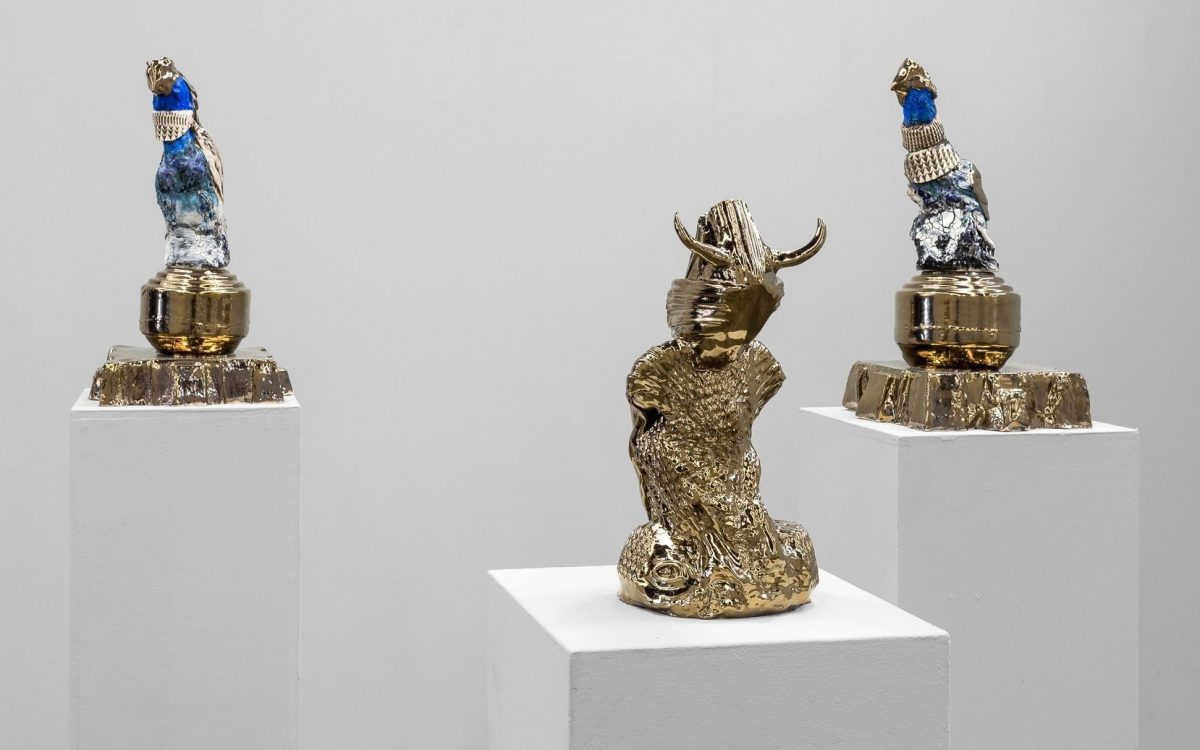One of the most discordant notes in our contemporary perception of ancient artistic culture is the way we bleach out colour – works originally defined by vibrant palettes have literally faded into monochrome. From the Venus de Milo to the Terracotta Army in Xi’an, ancient icons that are widely viewed and celebrated today shape our perceptions of the ancient world, and the “natural” tones that we experience today feed the misconception that classical times were austere and sombre. That stark monochromatism perhaps predisposes us to think of life in the past as being simpler and less vital than today.
As archaeologists will tell you, however, this is a complete fallacy. People in the ancient world loved to adorn their surroundings with colour as much as we do in the modern world (perhaps even more so), and would paint icons and temples with vivid colours whenever possible. The so-called Elgin Marbles, the Parthenon frieze notoriously residing in the British Museum, was not viewed by ancient Athenians as pure form in sober stone, but in a riot of dramatic colouring, almost confrontingly raucous to a modern eye schooled in the received vision of classical art. Of course, the original organic pigments inevitably faded over the centuries, leaving us with the monochromatic stoneworks that are the pride of any exhibit of classical sculpture today.
These perceptions of historic cultures seem to be what Melbourne/Naarm-based ceramicist, Ara Dolatian, seeks to confront in his latest exhibition, Heavenly Bodies at the James Makin Gallery. The show includes an impressive series of futuristic, yet ancient and colourful reinterpretations of the icons that we use today to populate our imaginings of the past.
Dolatian was born in Baghdad, Iraq, in the heart of a region widely hailed as “the cradle of civilisation”. Countless icons and artefacts excavated in the region serve as some of the earliest images of the civilisations that we know of and their attitude to the divine. The main archaeological museum in the region, the Iraq National Museum, is a living testament to this extraordinary history, housing a remarkable collection of thousands of ancient artefacts (which were sadly looted during the 2003 US invasion of Iraq), and this heritage informs and infuses Dolatian’s reimagination of the past.
Indeed, when encountering Dolatian’s works in this exhibition, it seems impossible to set aside his personal link with this conception of Iraq and his early memories of the archaeological museums in the region and the ancient cultures they preserve. Yet, Heavenly Bodies is not some type of reconstruction of ancient Mesopotamian artefacts – similar to Michael Rakowitz’s project The Invisible Enemy Should Not Exist – rather they are “heavenly bodies” from a personal, self-created mythology.
The bodies are from a distinctively ancient Mesopotamian aesthetic that allows viewers to relate to the Mesopotamian icons with which we are familiar. Many of the bodies in Dolatian’s works are very recognisable as ancient Mesopotamia icons. Pieces like Telloh (2023) and Apsu (2023) present the classic position of Anzû figures – the ancient Sumerian half-man and half-bird creations – but they are also an abstract, shapeless explosion of clay itself. They are icons that would never have been placed in King Gilgamesh’s Palace.
Mesopotamian aesthetic traditions are carried out in these pieces with recognisable wings, horns and claws supporting the ceramic chaos that forms the body of these creatures. It is the famous patterned beards – an ancient symbol of power – in pieces such as Golden Bull (2023) and Guide (2023) that resonate the most.
However, it is the colour that truly makes these bodies glisten. A deep cobalt blue and a shimmering gold present a brilliant contrast; the combination of colours immediately evokes a distinct Babylonian past, most famously in the form of the majestic blue and gold of the partly-reconstructed Ishtar Gate currently housed in the Pergamon Museum. Yet, the immediacy and intensity of these colours present them in a more vital modern light. Dolatian does sometimes use contrasting green and yellow to display a vividness to the colour palette in pieces such as Companion (2023), which is a welcome break from the blue and gold that dominate the exhibition – indeed, this very contrast helps enhance the effect.
Strangely enough, one of the more unsettling elements of the exhibition – at least to this inveterate visitor of museum collections – concerns what isn’t there, rather than what is. With a view to preservation, archaeological museums generally encase ancient icons in glass or perspex, especially those few pieces that retain vestiges of their original colouring, so that they are not degraded by sunlight or damaged by overly tactile observers. Yet, James Makin Gallery presents this collection free of such visual framing, giving these contemporary works a vibrancy and immediacy, and recalling that these are the products of an artist living among us today.
Without the descriptive material that typically accompanies museum displays, Dolatian invites viewers to come up with their own mythologies around the bodies, just as he has done. And yet, the absence of a text description that could provide insight from the artist into heavenly bodies and the stories behind them can be felt.
Read: Music review: Maria Callas: A Concert in Hologram, Arts Centre Melbourne
Overall, Heavenly Bodies is a stunning exhibition. As a ceramicist Dolatian has fulfilled the goals other artists may also be striving towards; that is, to connect ancient mythology with the future. While the rise of digital art may have been capturing the attention of many, the medium of ceramics is one that still forms the basis for presenting icons and divinity, some 6000 years later.
ARA DOLATIAN: Heavenly Bodies was on display at James Makin Gallery from 25 November to 10 December.
This review is published under the Amplify Collective, an initiative supported by The Walkley Foundation and made possible through funding from the Meta Australian News Fund.





